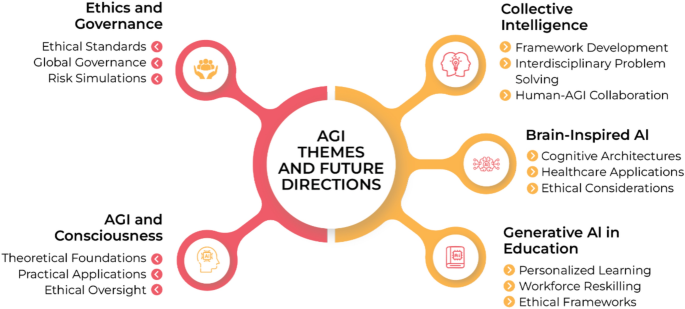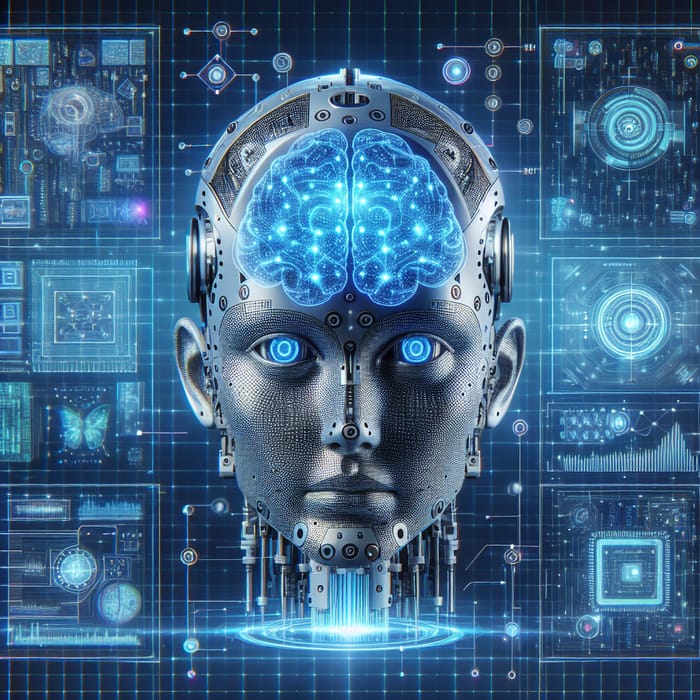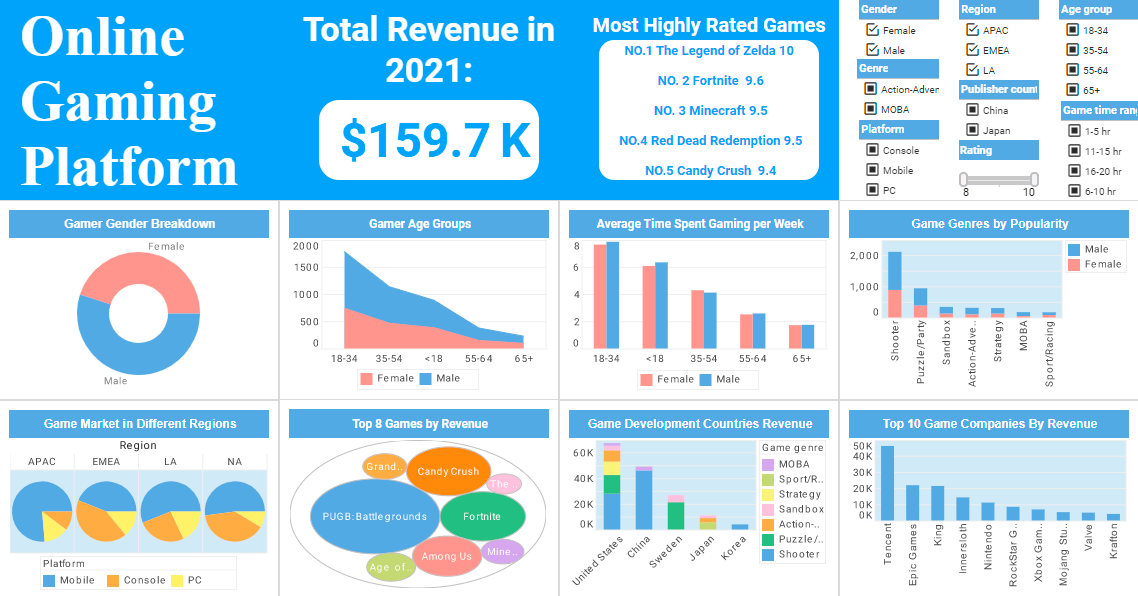Revolutionizing Customer Experience: How AI is Transforming Customer Service
The New Era of AI-Powered Support for Businesses of All Sizes
I've witnessed firsthand how intelligent support systems are completely reshaping the customer service landscape. Today, businesses of every size can access premium AI-powered capabilities that were once reserved for enterprise giants. Let me guide you through this revolution that's democratizing exceptional customer experiences.
The New Era of AI-Powered Customer Service
I've been watching the customer service landscape transform dramatically over the past few years. What was once a purely human-driven function is now being revolutionized by intelligent AI systems that are changing the fundamental nature of how businesses interact with their customers.

The most exciting aspect of this revolution is how AI is democratizing premium customer service capabilities. Small businesses can now leverage the same powerful tools that were once exclusively available to enterprise corporations with massive budgets. This levels the playing field in remarkable ways.
The statistics are staggering: according to industry projections, AI is expected to handle up to 80% of customer service interactions within the next three years. This represents a fundamental shift in how businesses approach customer support.
Evolution of Customer Service Models
The transformation from traditional to AI-enhanced customer service represents a paradigm shift in business operations:
flowchart TD
A[Traditional Model] -->|Evolution| B[Current Transition] -->|Future State| C[AI-Enhanced Model]
subgraph "Legacy Approach"
A --> D[Human-Only Agents]
A --> E[Limited Hours]
A --> F[Reactive Support]
A --> G[Standardized Responses]
end
subgraph "Hybrid Systems"
B --> H[Human + AI Collaboration]
B --> I[Extended Hours]
B --> J[Semi-Proactive Support]
B --> K[Semi-Personalized Responses]
end
subgraph "Future State"
C --> L[AI-First with Human Oversight]
C --> M[24/7 Availability]
C --> N[Predictive Support]
C --> O[Hyper-Personalization]
end
With tools like PageOn.ai, I can create clear visual mappings that illustrate this paradigm shift. These visualizations help my team understand exactly how our old support systems compare to the new AI-enhanced models we're implementing, making the transition much more intuitive.
Core AI Technologies Reshaping Customer Support
Behind every AI-powered customer service solution are sophisticated technologies working in concert. I've found that understanding these core technologies helps businesses make better decisions about which solutions to implement.
Natural Language Processing (NLP)
Enables AI to understand customer queries in natural language, interpreting intent, sentiment, and context regardless of how questions are phrased.
Machine Learning
Powers systems that continuously improve response accuracy over time by learning from each interaction and adapting to new information.
Generative AI
Creates human-like, contextually relevant responses by analyzing conversation patterns and retrieving relevant information from knowledge bases.
AI-Powered Analytics
Identifies customer sentiment trends, common issues, and opportunities for service improvement through pattern recognition.

When implementing these technologies, I've found that visualizing how they work together creates clarity for both technical and non-technical stakeholders. Using PageOn.ai's AI Blocks, I can create visual representations that show exactly how these technologies interact within our customer service ecosystem.
AI Customer Service Technology Ecosystem
This diagram illustrates how different AI technologies work together to create a comprehensive customer service solution:
flowchart TD
A[Customer Query] --> B[NLP Processing]
B --> C{Intent Recognition}
C -->|Simple Query| D[Automated Response]
C -->|Complex Query| E[Human Agent + AI Assist]
C -->|Sentiment Analysis| F[Emotional Response Adjustment]
D --> G[Machine Learning Feedback Loop]
E --> G
F --> G
G --> H[Knowledge Base Enrichment]
H --> I[Improved Future Responses]
style A fill:#FF8000,color:#fff
style B fill:#42A5F5,color:#fff
style C fill:#66BB6A,color:#fff
style D fill:#FFC107,color:#000
style E fill:#FFC107,color:#000
style F fill:#FFC107,color:#000
style G fill:#EC407A,color:#fff
style H fill:#7E57C2,color:#fff
style I fill:#FF8000,color:#fff
I've seen how AI assistants powered by these technologies can transform customer interactions from frustrating experiences into efficient, personalized exchanges that actually enhance brand perception.
Tangible Business Benefits of AI-Enhanced Customer Service
In my experience implementing AI customer service solutions, I've consistently observed four key benefits that deliver measurable ROI across businesses of all sizes:

Business Impact of AI Customer Service
The following chart illustrates the typical business improvements seen after implementing AI customer service solutions:
Operational Efficiency
By automating routine inquiries, I've seen businesses reduce their support ticket volume by up to 40%, allowing human agents to focus on complex issues that truly require their expertise and emotional intelligence.
Cost Optimization
AI-powered support typically reduces operational costs by 30-40% while simultaneously improving service quality and consistency. This cost reduction comes from both increased agent productivity and reduced need for staffing expansion as the business grows.
24/7 Availability
I've implemented solutions that provide round-the-clock support without the prohibitive costs of overnight staffing. This is particularly valuable for global businesses serving customers across time zones.
Response Time Reduction
AI triage systems categorize and prioritize customer needs instantly. In my implementations, average first response times have decreased by 60-70%, dramatically improving customer satisfaction metrics.
Using PageOn.ai's Deep Search functionality, I can integrate relevant cost-saving metrics and ROI visualizations directly into our strategy presentations. This helps stakeholders clearly see the financial impact of our AI customer service initiatives.
As industry experts at Zendesk note, "With AI purpose-built for customer service, you can resolve more issues through automation, enhance agent productivity, and provide support with confidence." This perfectly captures the multifaceted benefits I've observed in my own implementations.
Implementation Strategies for Different Business Sizes
I've helped businesses of various sizes implement AI customer service solutions, and I've found that the approach needs to be tailored to the specific scale, resources, and needs of each organization.

Small Business Approach
- Start with pre-built AI solutions requiring minimal customization
- Focus on automating your most common customer inquiries first
- Implement AI chatbots on website and social media channels
- Utilize AI assistants for small business to maximize impact with limited resources
Mid-Market Implementation
- Balance automated solutions with human touchpoints
- Implement AI-powered agent assistance tools
- Develop more customized knowledge bases
- Create seamless handoffs between AI and human agents
- Focus on omnichannel consistency
Enterprise-Level Deployment
- Develop fully customized AI solutions
- Integrate with complex existing systems (CRM, ERP, etc.)
- Implement advanced analytics and predictive capabilities
- Create sophisticated routing based on customer value
- Deploy global solutions with localization
For businesses of any size, I recommend visualizing your AI transformation journey using insights from a company ai transformation roadmap. This helps create alignment across departments and provides clear milestones for measuring progress.
AI Implementation Timeline by Business Size
This timeline visualization shows typical implementation phases across different business sizes:
gantt
title AI Customer Service Implementation Timeline
dateFormat YYYY-MM-DD
axisFormat %b
section Small Business
Assessment & Tool Selection :a1, 2024-01-01, 30d
Basic Chatbot Implementation :a2, after a1, 30d
Staff Training :a3, after a2, 14d
Refinement & Expansion :a4, after a3, 60d
section Mid-Market
Assessment & Strategy :b1, 2024-01-01, 45d
Initial Implementation :b2, after b1, 45d
Integration with Systems :b3, after b2, 30d
Agent Augmentation Tools :b4, after b3, 30d
Analytics & Optimization :b5, after b4, 60d
section Enterprise
Comprehensive Assessment :c1, 2024-01-01, 60d
Strategy & Roadmap Development :c2, after c1, 45d
Pilot Program :c3, after c2, 60d
Full Scale Implementation :c4, after c3, 90d
Global Rollout & Localization :c5, after c4, 120d
Using PageOn.ai, I create implementation timeline visualizations specific to each client's business size and needs. These visual roadmaps help transform abstract transformation concepts into clear, actionable steps with defined timelines and responsibilities.
Customer Experience Enhancement Through AI Integration
Beyond operational efficiencies, I've witnessed how AI transforms the fundamental nature of customer experiences. The most successful implementations focus on these key enhancement areas:

Personalization at Scale
AI enables businesses to tailor interactions to individual customer preferences without the traditional limitations of human-only service. I've implemented systems that automatically adjust tone, content depth, and solution approaches based on customer history and preferences.
For example, one retail client saw a 34% increase in customer satisfaction scores after implementing an AI system that remembers previous purchases and communication preferences.
Proactive Support
The most impressive AI systems I've worked with don't just respond to problems—they anticipate them. By analyzing usage patterns and early warning signals, these systems can reach out to customers before they even realize there's an issue, completely transforming the support paradigm from reactive to proactive.
Omnichannel Consistency
Modern customers expect seamless experiences regardless of whether they're interacting via chat, email, phone, or social media. AI serves as the connective tissue between these channels, ensuring consistent information and context preservation across touchpoints.
Emotional Connection Through AI-Human Collaboration
The most effective customer service models I've developed leverage AI for efficiency while preserving human connection for emotional resonance. AI handles routine tasks and information gathering, while human agents focus on building rapport and handling emotionally complex situations.
Customer Journey Transformation
This visualization maps how AI enhances different stages of the customer journey:
Using PageOn.ai's intuitive visual mapping tools, I create customer journey transformation diagrams that help my team identify exactly where and how AI can enhance specific touchpoints. These visualizations are invaluable for prioritizing implementation efforts and measuring impact.
Practical Applications Across Business Functions
In my work implementing AI customer service solutions, I've seen successful applications across various business functions. Here are the most impactful use cases I've encountered:

Customer-Facing Applications
- Intelligent Chatbots: I've implemented conversational AI that handles up to 70% of routine customer inquiries without human intervention.
- Virtual Assistants: More sophisticated than basic chatbots, these systems guide customers through complex processes like product configuration or troubleshooting.
- Voice Systems: AI-powered phone systems that understand natural language, route calls intelligently, and even resolve issues without human handoff.
Backend Support
- Agent Assistance Tools: AI that listens to customer calls and suggests responses or retrieves relevant information for human agents in real-time.
- Knowledge Base Integration: Systems that automatically maintain and update help documentation based on customer interactions and resolutions.
- Ticket Classification: AI that categorizes and routes incoming support requests to the right department or specialist.
Marketing Integration
- Personalized Recommendations: Customer service AI that identifies upsell or cross-sell opportunities based on support interactions.
- Campaign Feedback: Systems that aggregate customer service data to provide insights for marketing campaign refinement.
- Integrated Experiences: Using AI marketing assistants that work alongside customer service AI for cohesive customer experiences.
Reputation Management
- Review Response: AI-powered systems that draft personalized responses to customer reviews, which can be approved and posted by human managers.
- Sentiment Analysis: Tools that monitor social media and review sites for customer sentiment and flag issues for immediate attention.
- Automated Management: Implementing AI tools for customer review responses to ensure timely engagement with all customer feedback.
Cross-Departmental AI Workflow
This diagram shows how AI applications connect across departments:
flowchart TD
A[Customer Interaction] --> B[AI Triage System]
B -->|Support Issue| C[Customer Service AI]
B -->|Sales Opportunity| D[Marketing AI]
B -->|Product Feedback| E[Product Development]
C --> F[Knowledge Base]
C --> G[Human Agent if Needed]
D --> H[Personalization Engine]
D --> I[Campaign Management]
F -.-> C
F -.-> D
F -.-> E
G --> J[Case Resolution]
H --> K[Targeted Offers]
I --> L[New Campaigns]
E --> M[Product Improvements]
J --> N[Customer Data Enrichment]
K --> N
N -.-> F
Using PageOn.ai, I create visual workflows that show exactly how these applications connect across departments. This helps break down silos and ensures that AI implementations work cohesively rather than as isolated solutions.
Overcoming Implementation Challenges
In my experience leading AI customer service transformations, I've encountered several common challenges. Here's how I address them:

| Challenge | Impact | Solution Approach |
|---|---|---|
| Data Privacy & Security | Customer trust erosion, regulatory penalties | Implement robust data governance, anonymization techniques, and transparent privacy policies |
| Balancing Automation & Human Touch | Customer frustration with overly automated experiences | Design clear escalation paths to human agents, use sentiment analysis to detect when human intervention is needed |
| Managing Customer Expectations | Disappointment when AI capabilities don't match expectations | Be transparent about AI use, clearly communicate capabilities and limitations |
| Staff Resistance | Implementation delays, reduced effectiveness | Position AI as an assistant rather than replacement, involve staff in implementation decisions |
| Technical Integration | System fragmentation, data silos | Use API-first solutions, implement middleware where needed, prioritize platforms with strong integration capabilities |
Staff training is particularly critical for successful AI implementation. I've found that creating clear visual guides helps team members understand new workflows and responsibilities.
AI Implementation Success Factors
This chart shows the relative importance of different factors in successful AI customer service implementations:
Using PageOn.ai, I create clear visual guides that help staff understand new workflows and responsibilities when working with AI systems. These visualizations dramatically reduce resistance and accelerate adoption by making abstract concepts concrete and accessible.
Future Trends in AI Customer Service
Based on my work at the cutting edge of AI customer service implementation, I see several emerging trends that will shape the next generation of solutions:

Predictive Service Models
The next evolution in customer service will shift from reactive to predictive. I'm already working with early implementations that can anticipate customer issues before they occur by analyzing usage patterns, system diagnostics, and behavioral indicators.
For example, an AI system might detect that a customer is repeatedly visiting the same help page without resolving their issue and proactively offer assistance.
Emotional Intelligence in AI
Current AI systems can detect basic sentiment, but future iterations will understand and respond to complex emotional states. This includes recognizing frustration, confusion, or delight and adjusting responses accordingly.
Advanced systems will also be able to match their communication style to the customer's personality type and emotional needs.
Voice and Visual Recognition
Voice-based AI customer service is already common, but future systems will incorporate visual elements as well. I'm particularly excited about solutions that can analyze images or video sent by customers to diagnose product issues or provide visual guidance.
For example, a customer might show their malfunctioning device to the camera, and the AI could identify the problem and suggest solutions.
Hyper-Personalization
Beyond basic personalization, future AI will create truly individualized service experiences by integrating data across the entire customer journey. This includes purchase history, browsing behavior, support interactions, and even external data sources (with appropriate permissions).
The result will be customer service that feels like it's delivered by someone who truly knows you and your specific needs.
Timeline of AI Customer Service Evolution
This visualization shows the evolution of AI customer service capabilities over time:
timeline
title Evolution of AI in Customer Service
2018 : Basic Chatbots
Rule-based responses
Limited capabilities
2020 : NLP-Enhanced Systems
Better understanding of customer queries
Integration with knowledge bases
2022 : Generative AI Assistants
Human-like responses
Context awareness
2024 : Intelligent Routing & Triage
Sentiment analysis
Predictive issue resolution
2025 : Emotional Intelligence
Personality matching
Advanced personalization
2027 : Predictive Service Models
Proactive problem resolution
Integrated visual recognition
Using PageOn.ai's Agentic capabilities, I transform these abstract future concepts into tangible visual roadmaps that help my clients plan their long-term AI customer service strategy with confidence.
Measuring Success and Continuous Improvement
In my experience, establishing clear metrics and continuous improvement processes is critical for AI customer service success. Here's my approach to measurement and optimization:

Key Performance Indicators
Efficiency Metrics
- Average resolution time
- First contact resolution rate
- Automation rate
- Cost per resolution
- Agent handling time
Customer Experience Metrics
- Customer satisfaction score (CSAT)
- Net Promoter Score (NPS)
- Customer effort score
- Sentiment analysis trends
- Repeat contact rate
AI-Specific Metrics
- AI accuracy rate
- Successful containment rate
- Handoff rate to human agents
- Knowledge base effectiveness
- AI learning curve (improvement over time)
AI Customer Service ROI Components
This chart breaks down the typical ROI components of AI customer service implementations:
Continuous Improvement Framework
I implement a four-stage continuous improvement cycle for AI customer service:
flowchart TD
A[Collect Data] -->|Customer interactions
Agent feedback
System performance| B[Analyze Patterns]
B -->|Identify gaps
Find optimization opportunities| C[Implement Improvements]
C -->|Update AI models
Refine processes
Enhance knowledge base| D[Measure Impact]
D -->|Compare metrics
Gather feedback| A
style A fill:#FF8000,color:#fff
style B fill:#42A5F5,color:#fff
style C fill:#66BB6A,color:#fff
style D fill:#EC407A,color:#fff
Using PageOn.ai, I create dynamic visual dashboards that track and communicate progress to stakeholders. These visualizations make complex performance data accessible and actionable, helping maintain momentum and secure ongoing support for AI initiatives.
Getting Started: Your First Steps Toward AI-Powered Customer Service
Based on my experience implementing AI customer service solutions for various businesses, I recommend this step-by-step approach to getting started:

1. Assess Current Pain Points and Opportunities
- Analyze your most common customer inquiries and support tickets
- Identify repetitive tasks that consume agent time
- Review customer satisfaction data to pinpoint improvement areas
- Calculate current cost-per-interaction and resolution times
- Evaluate your current knowledge base and documentation
2. Select AI Tools That Match Your Specific Needs
- Consider your business size, budget, and technical capabilities
- Evaluate solutions based on integration capabilities with your existing systems
- Prioritize vendors with strong track records in your industry
- Look for solutions that offer both immediate value and room to scale
- Request demos and proof-of-concept implementations
3. Plan Integration with Existing Systems
- Map out connections to your CRM, help desk, and knowledge base
- Identify data sources needed for AI training and operation
- Establish data privacy and security protocols
- Create a phased implementation timeline
- Define clear success metrics for each phase
4. Address Staff Training and Change Management
- Communicate the value of AI tools to your team early and often
- Develop training programs for different roles (agents, managers, administrators)
- Create clear guidelines for AI-human collaboration
- Establish feedback channels for continuous improvement
- Recognize and reward successful adaptation
Implementation Readiness Assessment
Use this chart to assess your organization's readiness for AI customer service implementation:
Using PageOn.ai, I create visual implementation plans that transform abstract transformation concepts into clear, actionable steps. These visualizations help align stakeholders, secure buy-in, and ensure everyone understands both the journey and the destination.
The most successful AI customer service implementations I've led have one thing in common: they start with a clear understanding of specific business needs rather than chasing the latest technology trends. By focusing on solving real problems for your customers and agents, you'll achieve meaningful results regardless of your business size.
Transform Your Customer Service with PageOn.ai
Ready to create clear, compelling visualizations of your AI customer service strategy? PageOn.ai helps you transform complex concepts into intuitive visual expressions that align your team and impress stakeholders.
Start Creating with PageOn.ai TodayEmbracing the AI Customer Service Revolution
As we've explored throughout this guide, AI is fundamentally transforming customer service for businesses of all sizes. The democratization of these powerful technologies means that even small businesses can now deliver customer experiences that rival those of major enterprises.
I've witnessed firsthand how implementing the right AI solutions can dramatically improve operational efficiency, reduce costs, and enhance customer satisfaction simultaneously. The key is approaching implementation strategically, with clear goals and metrics in mind.
As you embark on your own AI customer service journey, remember that visualization tools like PageOn.ai can help you transform abstract concepts into clear, actionable plans. By creating visual representations of your customer service transformation, you can align stakeholders, guide implementation, and measure progress more effectively.
The future of customer service is intelligent, personalized, and proactive. By taking the first steps today, you position your business to meet evolving customer expectations and gain a significant competitive advantage in your industry.
You Might Also Like
From What to Why in Business Presentations: Purpose-Driven Storytelling Strategy
Transform your business presentations from data-heavy information delivery to purpose-driven storytelling that engages audiences and drives decisions with these expert strategies.
Breaking the Ice: Transform Your Opening Minute from Predictable to Powerful
Discover how to transform the first 60 seconds of your presentation from cliché to compelling with visual hooks, interactive strategies, and storytelling techniques using PageOn.ai.
Mastering FOMO Psychology: Creating Irresistible Business Pitch Strategies | PageOn.ai
Learn how to leverage FOMO psychology in your business pitches to drive urgent action. Discover proven strategies for creating authentic scarcity, exclusivity, and urgency that converts.
Audience-Centered Pitching Techniques: Visual Strategies That Win Every Time
Discover powerful audience-centered pitching techniques using visual storytelling, interactive engagement, and benefit visualization strategies that consistently win over any audience.
